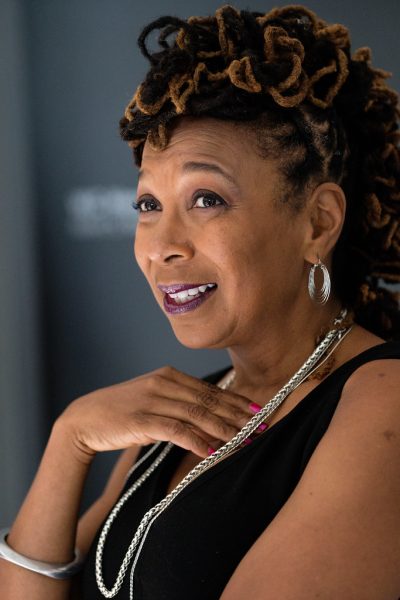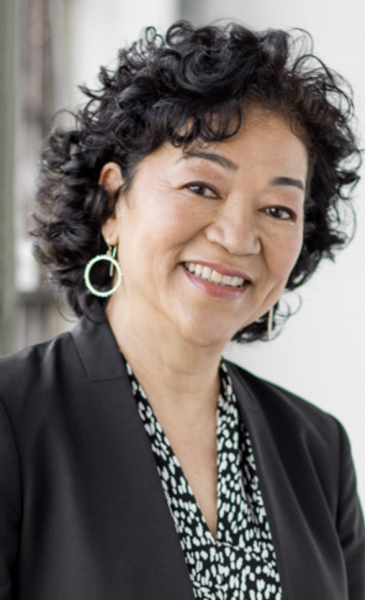In recent years, the women’s rights movement has skyrocketed with social campaigns like the #MeToo movement and more women achieving high level degrees than ever before. According to the Pew Research Center, the percentage of women with college degrees has gone up 25 percentage points since 1995 to reach 47%, which is 10% more than men in this country.
However, there is still an educational inequality that should be highlighted. In 2021, a survey from EdTrust found that 51.4% of white women have a college-level degree compared to 36.1% of black women. With this disparity in education still affecting the collegiate system in the United States, it is crucial to uplift the black women already making a difference in academics. Here are two outstanding women in different fields of academia.
Kimberlé Crenshaw (1959–)

With an undergraduate degree from Cornell University and a law degree from Harvard University, Kimberlé Crenshaw has and continues to pave the way in feminist theory.
Famously, in 1989 Crenshaw coined the term “intersectionality,” a concept which she introduced and developed. Essentially, intersectionality is the idea that one aspect of your identity (race, gender, sexuality) does not entirely define you. Instead, all of these identities overlap and create a unique experience for each person, with discrimination and oppression overlapping and mixing in myriad ways. “Intersectionality is a lens through which you can see where power comes and collides, where it interlocks and intersects,” Crenshaw said to Columbia Law School. “It’s not simply that there’s a race problem here, a gender problem here, and a class or LBGTQ problem there. Many times that framework erases what happens to people who are subject to all of these things.”
Historically, within the feminist movement, there’s been a lack of representation for black women. Although the women’s suffrage movement in the early 1900s pushed for voting rights for women, there was a silent “white” placed beforehand. Black women didn’t get the right to vote until the Voting Rights Act was passed in 1965.
Intersectional feminism stems out of Crenshaw’s theory and essentially states that race, sexuality, and class cannot be separated when advocating against sexism. There are different levels to different people’s struggles that have to be taken into account.
Furthermore, she also coined the term “Critical Race Theory” (CRT), which explains the way systematic racism overlaps with other identities. “How do we read the world? How do we understand the relationship to its history? We frame it that way not simply as a way of marking history and showing, for example, how segregated neighborhoods were the product of federal policy that continues to create material differences in wealth and in health to this day,” Crenshaw said to NPR.
In 1996, Crenshaw co-founded the African American Policy Forum (AAPF), which still advocates for African American rights today. The organization utilizes Crenshaw’s theory of intersectionality to promote movements like #SayHerName, which a recent AAPF Instagram post describes is a “campaign to center the stories of Black women, girls and femmes whose lives were lost to police violence.” The same post reads, “We cut through the disturbing reality of the invisibility and public silence by amplifying their names, demanding justice, and exposing the unique vulnerabilities Black women face under systemic injustice.”
Crenshaw currently teaches at Columbia Law School and University of California, Los Angeles (UCLA), where she continues to advocate for equality.
Nola Hylton (1957—)
Since Dr. Nola Hylton obtained her undergraduate degree from the Massachusetts Institute of Technology (MIT) and her PhD from Stanford University, she has played a crucial role in developing magnetic resonance imaging (MRI) to detect breast cancer. “The field of magnetic resonance imaging (MRI) was new and growing rapidly when I was a graduate student,” Hylton said to UCSF Hellen Diller Comprehensive Cancer Center. “At that time, it could take several hours to complete an MRI exam.”
At its start, MRIs were expensive, and many hospitals refused to even buy them. In addition, around this time period, breast cancer was just starting to no longer be a topic considered “taboo.” The 1980s marked the beginning of breast cancer activism, spreading awareness and creating support groups for women that were suffering from or had survived this disease. Prior to this, breast cancer was something women silently suffered from, and it had a high death rate.
Breast cancer was, and is, described as an isolating, tumultuous journey. Audre Lorde, a writer and professor, writes in her book, The Cancer Journals: “I have cancer. I’m a black lesbian feminist poet, how am I going to do this now? Where are the models for what I’m supposed to be in this situation? But there were none. This is it, Audre. You’re on your own.”
Hylton explained that she wanted to improve the lives of those suffering from similar circumstances as Lorde. “[T]he chance to use MRI to address the problem of breast cancer was the perfect match between my training and desire to work on a problem of immediate relevance,” Hylton said. “It also enabled me to work with more women and achieve greater gender balance in my work life since breast cancer overwhelmingly affects women.”
Hylton and her team developed the optimization of MRI technology–essentially, making it easier and more efficient to use. Now, she designs MRI biomarkers, indicators that can measure progress, in order to determine how effective treatment is for breast cancer patients. These biomarkers allow changes in a patient’s treatment to be precisely measured. This, in addition to her other work, has largely expanded and improved the quality of treatment that can be given to a patient. Without Hylton’s work, there would be a noticeable gap in her field.
Hylton addressed the issues that black women face in science fields, saying, “As black women in science we face the dilemma of how to fully engage and excel in our profession yet keep firmly tethered to our source of identity. These worlds can often be very far apart. This can discourage young black women from choosing STEM career paths in the first place and is then a barrier to advancement and retention.”
In the meantime, Hylton will continue to develop her research: “I hope to continue to move breast MRI technology forward so that it can have greater impact on reducing breast cancer,” Hylton said. “I think I can be most effective through the mentoring and support of junior research scientists and active encouragement of the partnerships necessary to move research innovations in breast imaging into wider clinical utilization.”
Conclusion:
Both Crenshaw and Hylton have done incredible work to improve their respective fields. Ultimately, the barrier to innovation is built on discrimination. Anything hindering black women from the academic field prevents all of the many improvements and innovations they can make in the world. Who knows how many women could have been Albert Einsteins, Isaac Newtons, and Charles Darwins? How many could have changed the world if it wasn’t for the fact that the world was against them? Working towards equality means working towards a better future for everyone.







